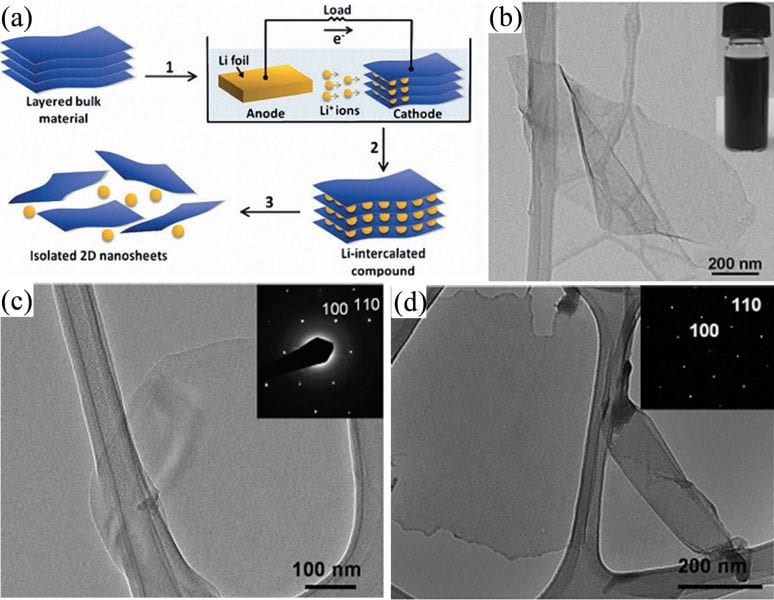Gas sensors play an important role in a wide range of both home and industrial applications such as gas leakage detection, air-quality monitoring and breath-analysis. Among the various types of gas sensors, chemiresistors are probably the most promising due to their easy fabrication, low cost, high sensitivity and wide detection range. Gas sensors can complement as an alternative to more sophisticated instruments or systems for various detection purposes.
With the fast development of graphene research, materials with a typical 2D structure are attracting increasing attention, typically including metal dichalcogenides, metal oxides, phosphorene, MXene, boron nitrides, as well as their nanocomposites. These materials can be obtained by typically top-down or bottom-up process. They also bring up a huge opportunity to manipulate diverse composite materials though surface functionalisation or hybridisation.

Electrochemical exfoliation for the preparation to produce nanosheets for 2D sensors.
To be utilised for a sensing layer, the 2D geometry affords enhanced surface adsorption due to its large surface-to-volume ratio. The 2D planar structure also provides a good compatibility with current thin film technology for manufacturing electronic devices. Gas-phase deposition techniques such as atomic layer deposition or chemical vapour deposition also make it possible to study the dependence of the thickness of the sensing layer on the sensor properties and performances.
In their recent review paper in Advanced Functional Materials, Prof. Nicola Pinna from the Humboldt-University Berlin, Germany, and Prof. Jun Zhang from the Qingdao University, China, and colleagues comprehensively summarised and discussed the state-of-the-art developed sensing nanomaterials bearing a two-dimensional structure. The authors overviewed the synthesis protocols of 2D materials, as well as explained how these 2D nanomaterials can be efficiently integrated into sensor devices. The progress in the utilisation of various 2D nanomaterials and the possible strategies to optimise the material structure, composition and geometry, in order to achieve better sensor performances, and the resultant transducing mechanisms have been thoroughly discussed as well.
The authors’ conclusion of the review is that 2D nanostructured materials, including metal oxides, graphene, metal dichalcogenides, phosphorene, BN, show a great promise for developing efficient gas sensing devices.
This text was kindly provided by the authors.

















